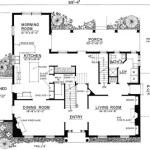Essential Aspects of Roman Bath House Floor Plan
Roman bathhouses, known as thermae, were elaborate structures that served as social, recreational, and hygienic centers in ancient Rome. Their complex floor plans reflected the multifaceted uses and functions of these iconic buildings.
Layout and Zoning
Roman bathhouses typically followed a symmetrical layout, with the main rooms arranged along a central axis. Visitors entered through a vestibule (vestibulum) and proceeded to the changing room (apodyterium), where they undressed and stored their belongings. The bathing area (thermae) was divided into three main sections:
- Frigidarium (Cold Room): A room with a cold plunge pool for cooling down after the hot baths.
- Tepidarium (Warm Room): A room with a warm pool for transitioning from the cold to the hot baths.
- Caldarium (Hot Room): A room with a hot pool and a domed ceiling for heating the space.
Supporting Spaces
In addition to the main bathing areas, Roman bathhouses included various supporting spaces:
- Palaestra (Courtyard): An open-air courtyard for exercising and socializing.
- Unctuarium (Oiling Room): A room where bathers applied oils and perfumes.
- Sudatorium (Sweating Room): A dry heat room for inducing sweating.
- Latrina (Toilet): A room with toilets and running water.
Hypocaust System
Roman bathhouses were renowned for their elaborate heating system known as the hypocaust. This system consisted of a network of tunnels under the floors of the bathing rooms. Hot air from furnaces (praefurnia) circulated through these tunnels, heating the floors and walls. This ingenious design allowed for efficient and controlled heating of the bathhouse.
Decoration and Amenities
Roman bathhouses were often lavishly decorated with marble, mosaics, sculptures, and paintings. They featured fountains, pools, and amenities such as massage tables and cosmetic booths. The bathhouses served as social and cultural hubs, offering patrons a place to relax, socialize, and indulge in various recreational activities.
Significance and Legacy
Roman bathhouses played a vital role in Roman society. They provided hygiene, health, and leisure to citizens of all social classes. The complex floor plans and sophisticated heating systems of Roman bathhouses are a testament to the ingenuity and architectural brilliance of ancient Rome. Their influence can still be seen in modern bathhouses, spas, and public pools around the world.

Roman Bathhouse Layout Bath House Baths

Plan Of Bath House Roman Baths

Roman Baths Artwork Stock Image C017 7251 Science Photo Library

Thermae Wikipedia

Roman Baths World History Encyclopedia

Architecture 318k Long Flashcards Exam 2 Images Studyblue Roman Bath House Baths Ancient

Roman Bath House At Chesters

The Roman Baths

View Article Baths Bathing As An Ancient Roman

Roman Baths Diagram Display Poster Teacher Made Twinkl








